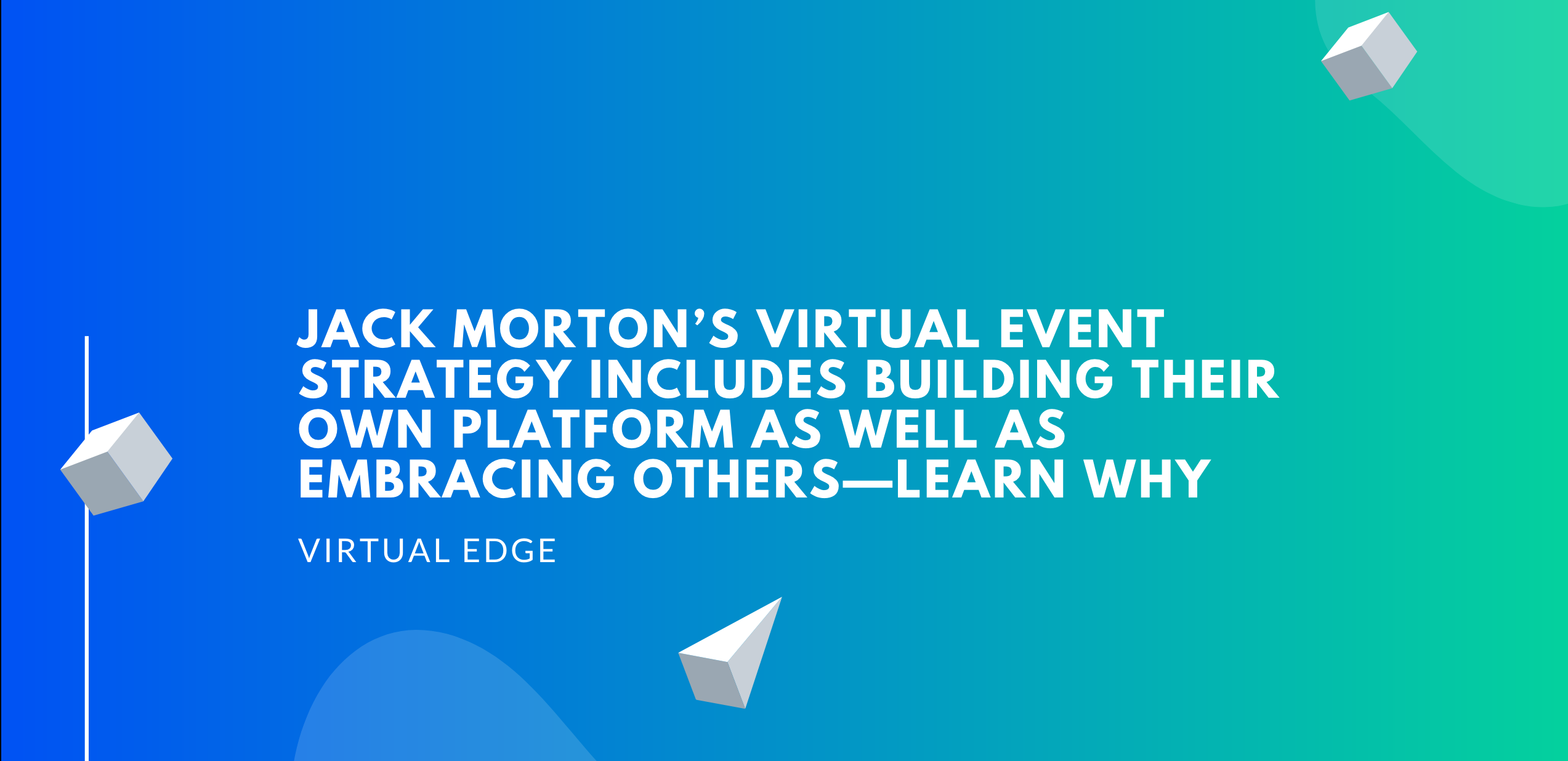Virtual Edge recently had the opportunity to catch up with Chris Haff (formally of Cramer) who is now the Director of Technology Solutions at Jack Morton Worldwide. We wanted to understand Jack Morton’s virtual event platform and how it relates and affects Jack Morton’s relationship with the other platform vendors.
Chris was able to give us an ‘on the fly’ demo of the platform as well as discuss the differences with other virtual event platforms and serve up some best practices along the way.
Jack Morton has met with and demoed most of major platforms and values the relationships noting that first and foremost, Jack Morton is an agency and will work with any vendor their clients deem appropriate to meet their needs. Having said that, Chris noted “at the time, most of the virtual event platforms out there were set up to look like and mimic a trade show environment. You could jury-rig a booth to maybe be a breakout room but it was still a tradeshow environment. The other thing that was a drawback was the lack of creative control over the environment and the design. There were areas that you could change graphically but they were set areas and though they were good for public events and tradeshow they weren’t working the best for private, in-house events and meetings.”
So Jack Morton decided to build their own platform that would allow them full control. They want to be able to manage and control the user experiences so they could best achieve the goals of the event. The new virtual experience platform enables fully customizable online events with the same high standard for design, content, marketing ROI and integration as they bring to their physical events.
The platform offers a 3D environment and utilizes partners and third parties to provide live streaming, analytics and the backend content management system (CMS). You’ll find most of the same features that you would find on the other platforms (ON24, InXpo, Unisfair, iCongo, Expos2, 6Connex, etc.) including built-in registration, expo hall, auditorium, networking lounge, resource center, tracking and reporting.
The roadmap calls for video chat to be deployed soon as well as ongoing connections to social media platforms like twitter, LinkedIn and Facebook.
“Virtual events are here to stay and we see them as augmenting physical events and not replacements,” said Haff. “We don’t see the other platforms as competitors, they serve a great need in the market but we also need to be able to serve clients that have specific event needs and security requirements or integration with their live events.”
As far as best practices that have been learned, Haff says:
- Always start with your audience and then work backward.
- Sync up your content with the context of the event.
- Always try and keep videos and sessions to 10 to 20 minutes unless you are in a certain type of education or training situation.
- Add user interactivity whenever you can but only where appropriate-always ask why you engaging them as well as how. (Polls are good.)
- Use LinkedIn, Twitter and Facebook where appropriate to connect attendees in hybrid as well as virtual only events.
- If you are dealing with C-level attendees, make sure the user experience is simple, consider adding more control over moving them to locations that they need to be at and keep any important information they may want at their fingertips. Keep it clean and simple.
In a recent study of over 400 marketers conducted by Jack Morton, 82% said that their “organization could increase revenue by better leveraging experiential strategies to engage employees, business audiences and consumers online.” Yet 64% cited the ability to “integrate live experiences with virtual/online or other marketing experiences” as a key obstacle to successfully deploying experiential strategies for their organization.
The need to develop skills, techniques and technologies to enable seamless integration of virtual events with live events and improve the user experience will only continue to increase.
